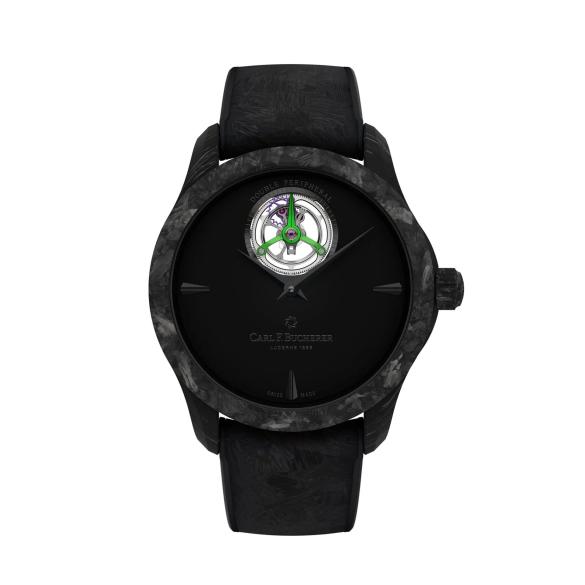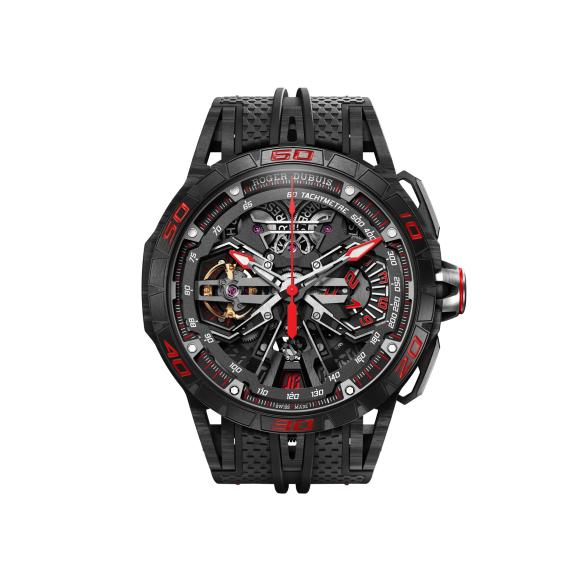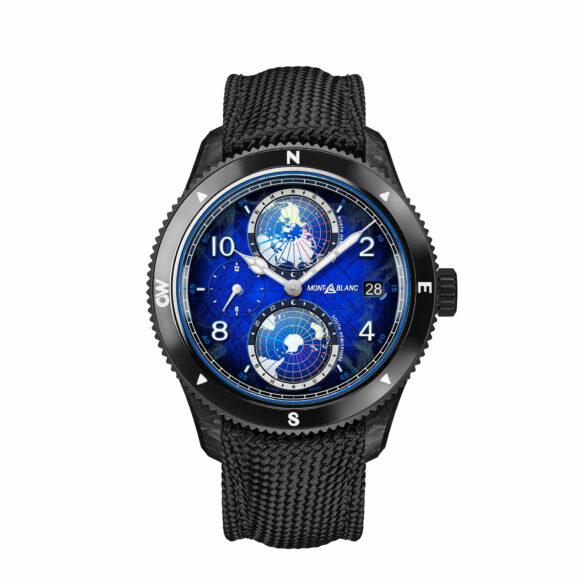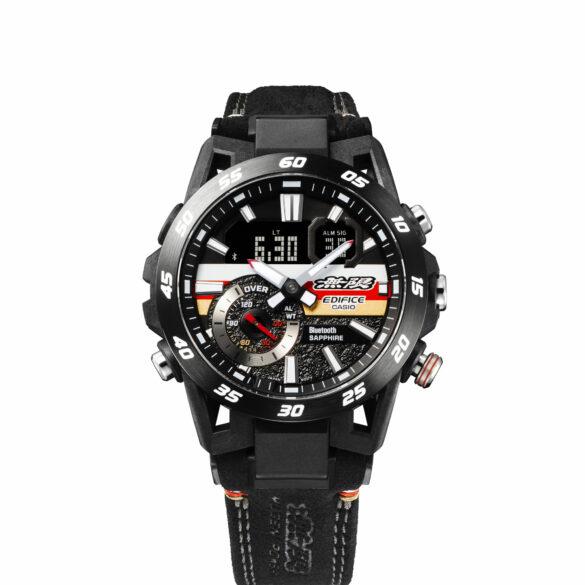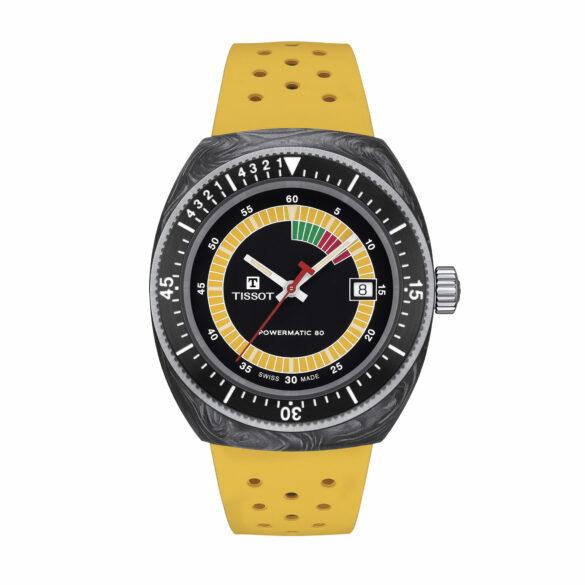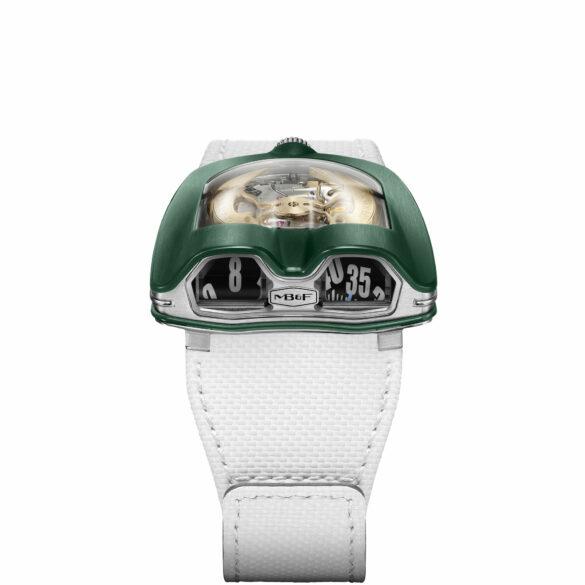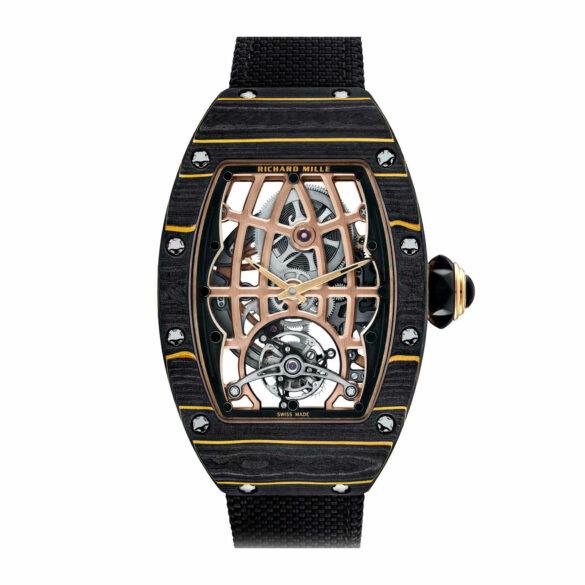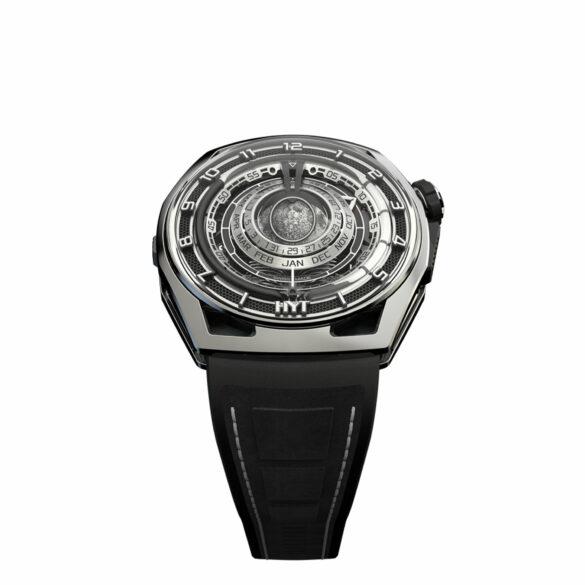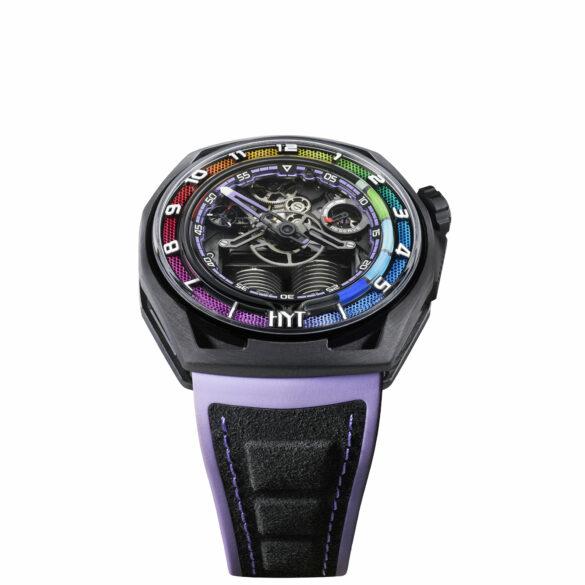The most black contribution to this year’s Only Watch is the Carl F. Bucherer Manero Tourbillon Double Peripheral Only Watch
Carbon
Carbon, symbolized by ‘C’ on the periodic table, and atomic number 6, is a fundamental element renowned for its versatility. In general, it serves as a cornerstone for life and is widely abundant throughout the universe.
.
What makes it unique is its remarkable bonding capability with other elements, particularly itself, leading to the formation of diverse structures. In the realm of watches, it also plays a fascinating role.
.
Carbon and watchmaking
.
Carbon finds its way into watchmaking through various forms, each offering distinct properties. Carbon fiber, for instance, known for its lightweight and robust nature, is often used in crafting watch cases and straps, enhancing durability without compromising style.
.
Another form, carbon nanotubes, with their exceptional strength and conductivity, contributes to the development of advanced watch technologies, such as in creating highly precise sensors or improving battery performance.
.
Lightness is the most important aspect
.
Sure, the robustness is an important aspect to use carbon for the case of a watch. But lightness is an even more important aspect. Big and bold watches, often with a lot of tech inside, can be very heavy. The use of carbon helps to reduce weight.
.
In essence, in watchmaking it encapsulates both tradition and progress, blending craftsmanship with cutting-edge innovation. Its significance underscores the technical advancements within the industry.
.
Hardness of carbon
.
The hardness of carbon is not very great. 316L stainless steel has a Hardness Vickers (HV) of about 150-200 HV, the carbon resin matrix alone could be around 10–30. However, for watches forged carbon is used, that reaches 20 to 50 HV. Still not near stainless steel.
.
This is why most high-end watches with carbon have other materials as well to protect the carbon case. Ceramic for instance, for a bezel, and titanium components for crown and guards.
.
Some brands mix carbon with other materials. Panerai for instance has created Carbotech, which is a mix of carbon fiber and polymer. All special treatment and mix processes makes Carbotech remarkable more hard than carbon. Carbotech has a Hardness Vickers of about 190 HV to 250 HV.
.
Compare case materials on the Hardness Vickers scale (from hard to hardest):
.
| Carbon | 20-50 HV |
| Platinum | 40 HV (950 platinum: 80-135 HV) |
| Silver | 70-90 HV |
| Bronze | 60-150 HV (100-200 HV treated) |
| Aluminium | 120-200 HV |
| Gold | 120-200 HV (18k or 14k) |
| Palladium | 150-200 HV |
| White gold | 150-250 HV |
| Stainless steel | 150-250 HV (special 1200 HV) |
| Titanium | 150-200 HV (grade 2) / 300-400 HV (grade 5) |
| Ceramic | 1200-1400 HV (1500-2000 for alumina) |
| Sapphire | 2000-2300 HV |
.
Watches from carbon
At the Goodwood Festival of Speed 2023 Roger Dubuis revealed the Roger Dubuis Excalibur Spider Flyback Chronograph
The Montblanc 1858 Geosphere 0 Oxygen Carbo2 Only Watch 2023 is Montblanc’s donation to Only Watch for this year
The Girard-Perregaux Laureato Absolute Chronograph 8Tech is the newest member of the Laureato Absolute collection
This Casio Edifice Mugen Edition is the motor sports related result of the collaboration between the two Japanese brands
The new Tissot Sideral S Automatic goes back to 1968 when Tissot developed the prototype of their Sideral
The MB&F HM8 Mark 2 (Horological Machine 8) is a follow-up of the earlier released HM8 models, all inspired by cars
The Richard Mille RM 74-02 Automatic Winding Tourbillon is a combination of gold and carbon, with a bit of titanium
HYT launches two new variants of their Moon Runner: the HYT Moon Runner Ghost and the HYT Moon Runner Desert
After two green, a blue and a bronze colored Hastroid model, HYT reveals the HYT Hastroid Rainbow, a colorful limited edition
